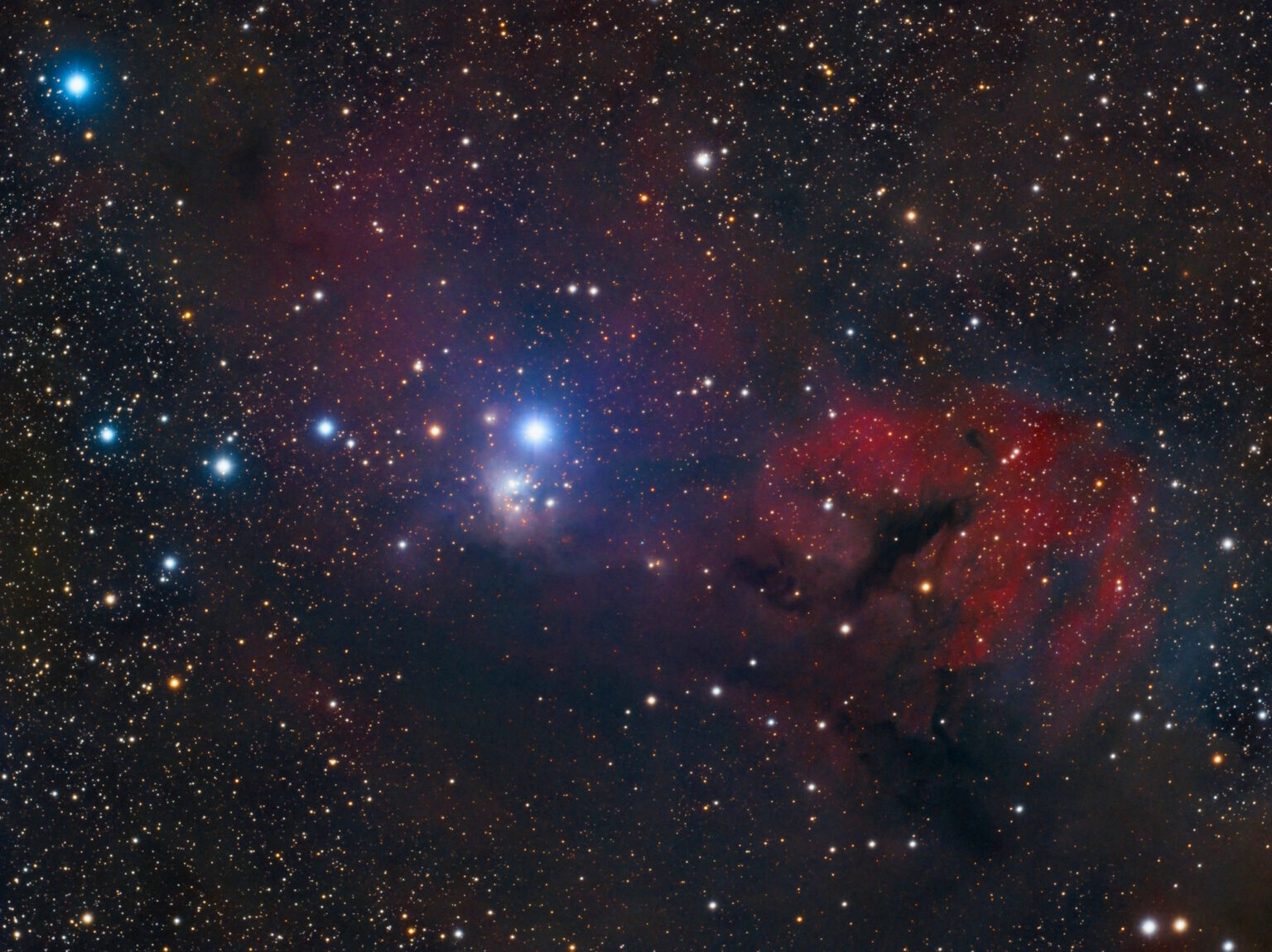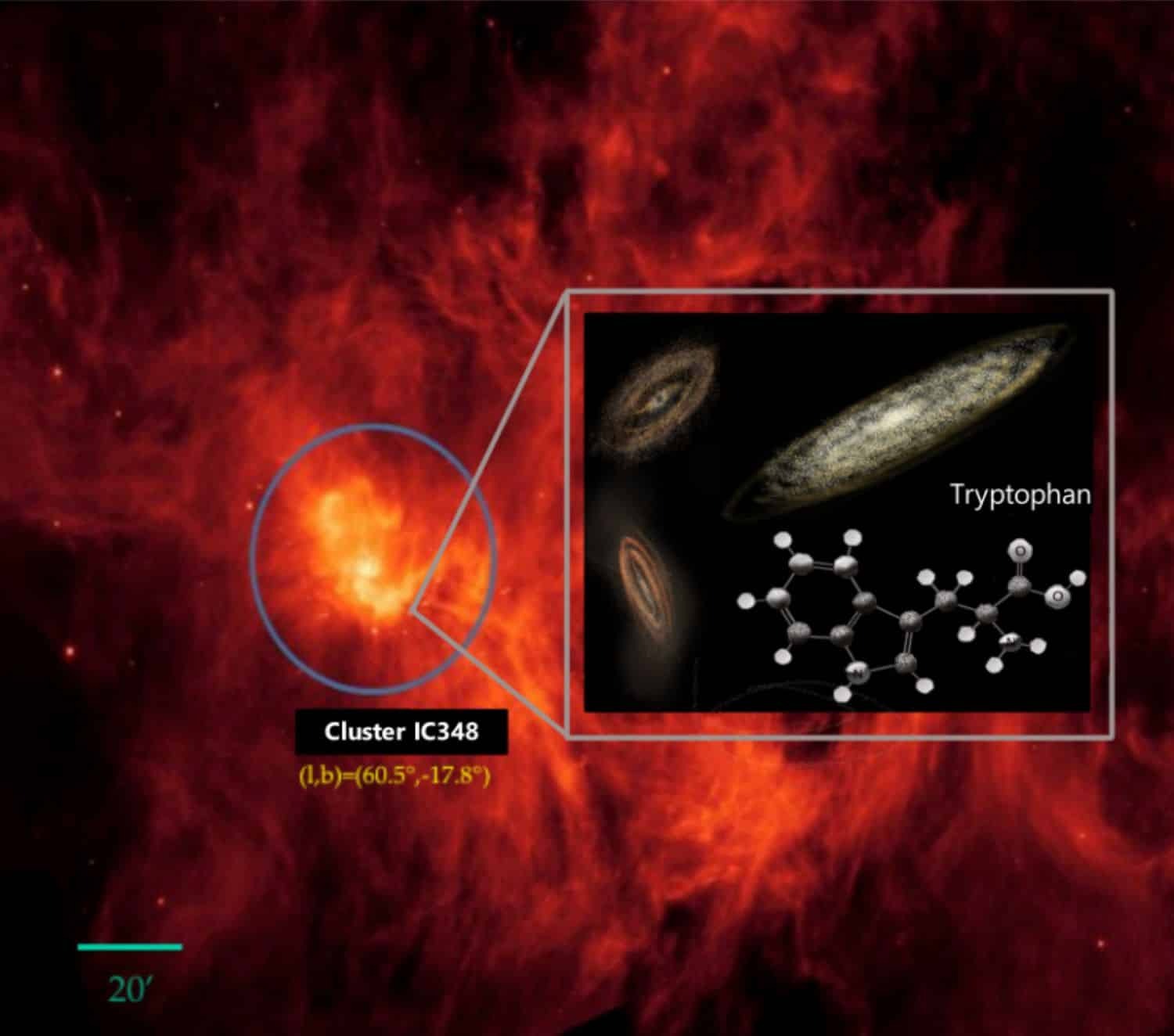One of the richest images of spectral lines in the infrared range is formed by tryptophan — one of the 20 amino acids necessary for the creation of vital proteins on Earth. The Spitzer Space Telescope, which has already ceased its operations, accumulated a significant spectroscopic data archive during its mission. Scientists are gradually deciphering this data and sharing new discoveries.

According to research by Dr. Susana Iglesias-Groth from the Canary Islands Institute of Astrophysics (IAC), who used data from the Spitzer Space Telescope, it has been found that the amino acid tryptophan is present in interstellar material in the neighboring star-forming region.
Tryptophan, or L-tryptophan, is one of the essential amino acids for the human body (chemical formula C11H12N2O2). It serves two main functions: it is a component of proteins and RNA, and it is also a precursor to serotonin (the “happiness hormone”), melatonin (the “sleep hormone”), growth hormone, and niacin.

In the molecular complex of Perseus, particularly in the star system IC348, located 1,000 light-years away from Earth, the telescope has detected a significant amount of tryptophan. This region is usually invisible to the human eye but emits brightly in the infrared range.
Frozen amino acids
The study of the infrared light emitted by this region revealed 20 spectral lines of tryptophan. Interestingly, the temperature of tryptophan is approximately 280 Kelvin, or 7°C. Previously, Iglesias-Groth detected hydrogen and water in IC348 at the same temperatures.
According to the research, the emission lines associated with tryptophan are often observed in regions where stars and planets are forming and may be present in other star-forming areas.
This new research may indicate that the substances necessary for protein synthesis, which are crucial for the emergence of life, naturally occur in regions where stars and planetary systems are forming. These substances may also influence the early chemistry of planetary systems orbiting other stars.
“The discovery of tryptophan in the molecular complex of Perseus should stimulate further research to detect other amino acids in this region and other stellar areas. It is an exciting possibility that the building blocks of proteins are widely distributed in the gas from which stars and planets form, which may be crucial for the development of life in exoplanetary systems,” explains Dr. Iglesias-Groth.
Previously, we reported on the discovery of “molecules of life” in samples from the asteroid Ryugu.
Based on materials from techexplorist.com.

